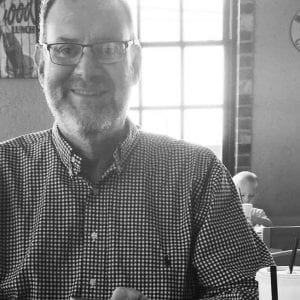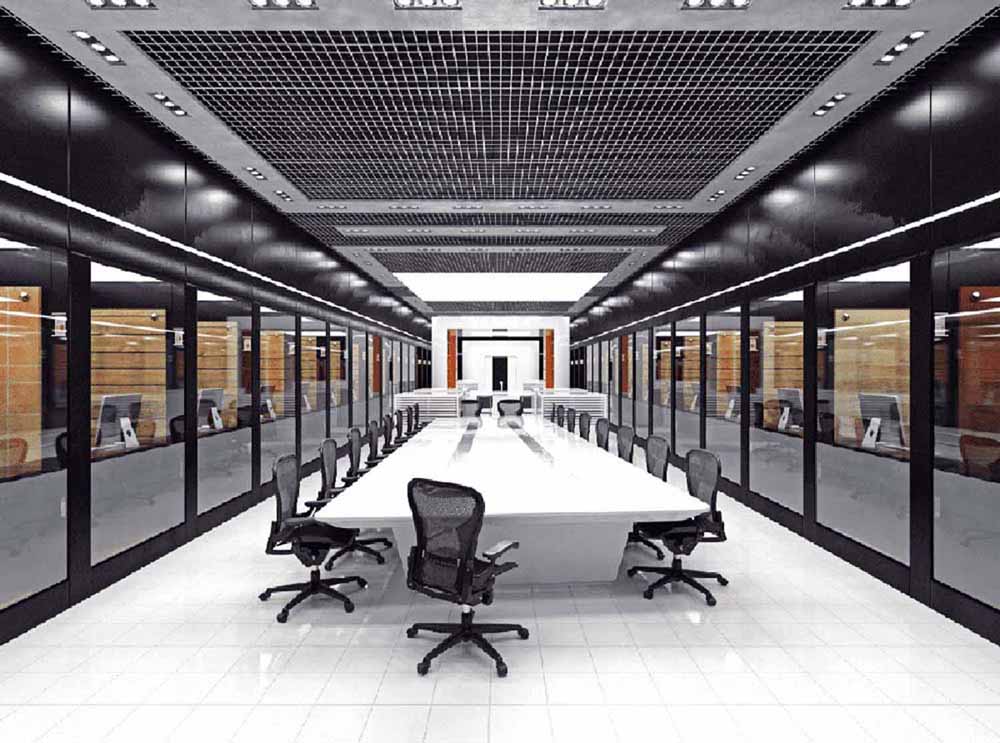
One easily identifiable similarity among innovators in design is the painful tipping point. There comes a moment when they realize a solution must be found because the pain that’s causing the problem can no longer be ignored. That moment of clarity came for Wayne Braun in a sales presentation, when the salesman of a furniture company stood inside of the file drawer of a cabinet and jumped up and down. “Look how sturdy this is,” he exclaimed. “This will last you 20 years.”
“That was the nature, in concept,” Braun explains, “Of how we thought about designing a workplace.” Innovation is the process of solving a problem.
FreeAxez asked Mr. Braun to recount his journey, and how he began “future-proofing,” long before it became the popular concept it is today. What was the process that led to the exceptional, human-centered, forward-thinking design and creativity for which PDRCorp is known.
Building for Scale
“Even in the instance where the client didn’t own a property but leased it, you built with the intent that it would last for 20 years. You designed with the presumption that everything was relatively static. The biggest concern in our market was how big a client company was going to grow. Things were built so you could accommodate a 5-10 percent annual growth rate. That was the critical issue.
“As time went on, there were downturns. The problem that the client needed solved turned 180 degrees. ‘We don’t need as much as we have, and what do we do with what we don’t need? How do we adjust?’”
In the given economic conditions and technology improvements, Mr. Braun and his team started to realize that business cycles were beginning to come faster and shorter.
Designing Flexibility into the Workplace
“As a result, our firm became very conscious that building a workplace wasn’t just to house your employees. We also saw the workplace can also be an asset to improve your company and employee performance and should be treated as such.
“Your workplace should parallel your business model and the business you’re in. You need to understand cycles and that things change. Cycles can change rapidly or slowly, and this reality varies between different industries and companies.
“That’s always part of the program and informed upfront studies we would do with a client. We sought to understand what we could do to make the workplace support their endeavor better.
“The process has to be collaborative. As an example, a law firm doesn’t change radically. What it does is reasonably stable in nature, and so the workspace remains the same over long periods. They have evolved over the last 40 years, but that change occurs much more slowly than for a technology company.
“You can’t just come up with an idea and try to position it as a solution for every condition. Future-proofing is more about understanding the company and what business they’re in and how they see the need to change.”
Fast Forward to Today’s Client
Though he’s retired (2018), Mr. Braun is still very current with the types of building problems organizations face in 2020. Looking back to that sales presentation with the furniture company through the filter of today, there’s a strong divergence of client expectation.
“Now, the client is more interested in designs that can bring them through the next five years. The conversation has completely shifted. We don’t need to know if a “file cabinet” will last 20 years, and in a broader view, the infrastructure of the workplace. Now the client wants to stay cost-efficient and make the best purchases from an ergonomic standpoint. In five years, the company could be a different kind of company or owned by somebody else. It could be operating completely differently on technology and other drivers. So, the plan needs to be flexible.”
Forward-Thinking Design and Workplace Agility
How does a company translate that into architecture in the workplace? “The first resolve,” says Braun, “Is to have a conceptual commitment to that flexibility and decide to what degree you want to invest in a future proof solution for your facility.
“Are you leasing or do you own?
“Leasing = 10-year perspective
“Owning = 30-year perspective
“In a 30-year situation, it would make sense to invest more in future-proofing. If you’re leasing, you realize you’re going to have to rethink the outcome you need every 10 years.
“Developing the strategy with the client comes down to deciding how much is enough and appropriate to the overall cost of creating the new workplace.
“By the nature of what we do, we had ongoing clients and the good fortune of working with several large clients with a lot of employees and a lot of workplace real estate. That experience was valuable in that it allowed us to see the evolution of their needs over time.
“One of our larger clients, 25 years ago, had nothing but 10 x 15-foot offices in a row for miles, and that’s where everybody sat. Over time, because of the technology, the work process, and the change in the type of employees they were hiring — that process evolved into a free seating model. Nobody has an assigned seat. Today, people even work from home or distant locations and only frequent the office when it’s time to meet face-to-face.”
Real estate is part of a company’s assets. Mr. Braun states it’s critical to leverage the value of real estate as effectively and efficiently as a business would any other aspect.
“With those clients, we got to partner in and see how their world changed. We worked with them to see how to adapt the workplace to that requirement.”
Future-Proof Floor, Cable, and Power on Day One
To make it easier for clients to shape the future of the workplace, architects and designers need to begin with systems that flow with the priorities of the business and the people. The building of today needs to accommodate the technology of tomorrow. Gutting a space and re-constructing it as newer and “more efficient” is often an inefficient use of resources and unfeasible in terms of time.
While building owners want to be on the cutting edge, there are still costs associated with adopting any new technology, and like any project, the budget is at the center of every decision.
Whole building design is the body of thought that encompasses all of the techniques, technology, and systems used to create modern high-performance buildings.
That’s why a cable management distribution system is powerful—having the ability to change direction or reconfigure in the middle of a project, next year, or ten years down the road — without tools or anything else.
By implementing the Gridd system, architects can ensure a smooth workflow to all the stakeholders, from the blueprints to the end-user. Our solution is portable and can move with you to new locations when needed. FreeAxez will work with the architect to help implement Gridd into the floor plan and use CAD diagrams to assist in the design process.
Forward-Thinking Design
Practically speaking, successful workplace design is determined by the ease in which it supports the achievement of business goals. A future-proof business environment with a forward-thinking design can scale up or down as a client’s needs change. Market cycles–upturns and downturns–don’t have to be restrictive when a cost-efficient strategy is in place. FreeAxez is delighted that Mr. Braun shared these ideas with our readers.

